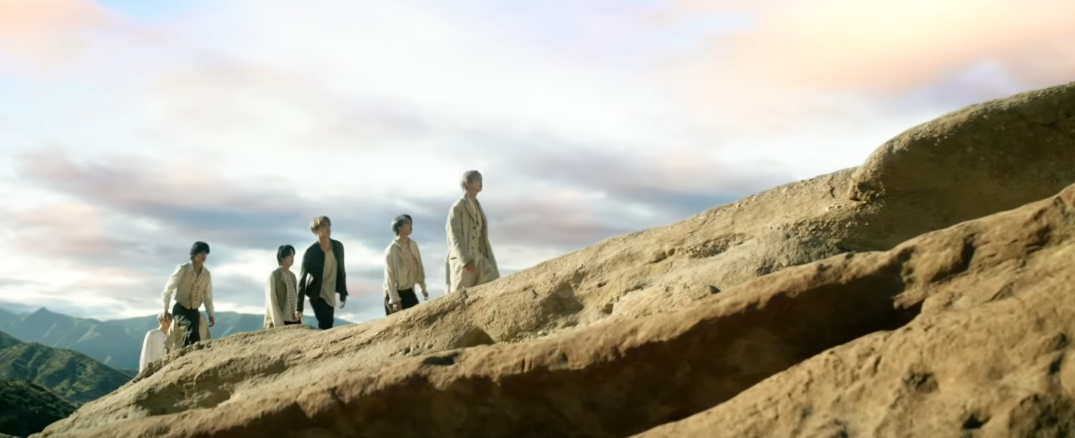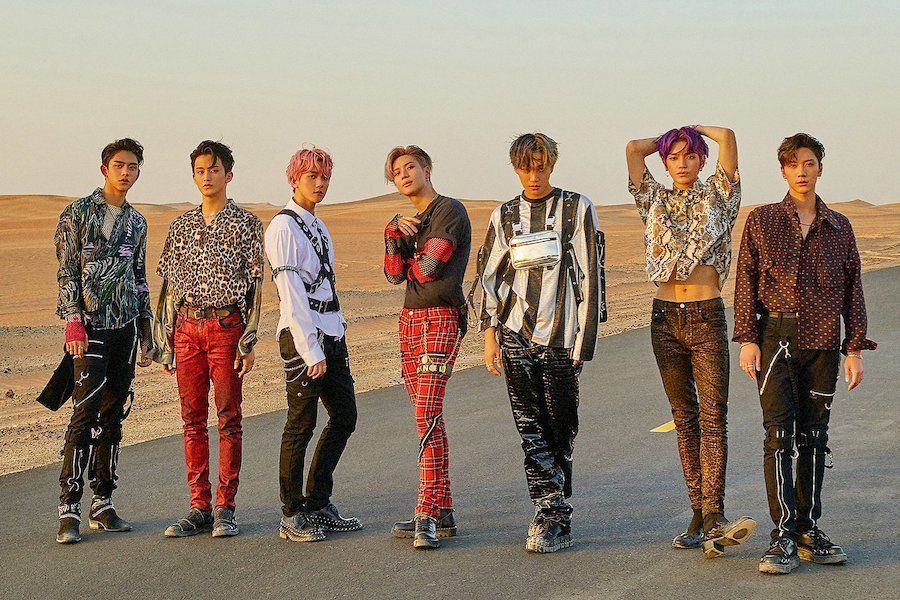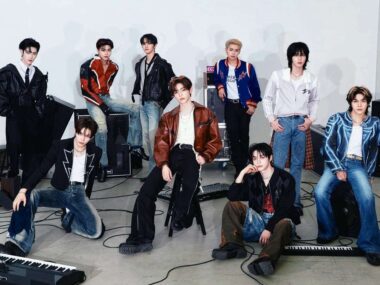When BTS released ON as the lead single from Map of the Soul: 7, it felt more like it was a statement. Both the song and its music video dive into what it means to fall down, pick yourself back up, and keep moving forward even when everything feels heavy.
At its heart, ON is all about resilience. The song reflects BTS’s journey: it addresses how their lives changed following their massive success, the sacrifices they had to make and their determination to move forward together as a group. The official music video weaves together mythology, religion, and some pop culture references to create a story of growth.
Cycles of Pain, Rebirth, and Moving Forward
The video opens on what looks like a battlefield. Jin rescues an injured dove which comes back to life near the end of the video. The dove is a classic symbol of peace and its recovery is a sign that even when everything seems bleak, you can always rebuild and start anew.
Jung Kook’s scenes show him running in an empty field with thorns wrapped around his hands. He collapses before waking up; a subtle reference to the story of Jesus Christ. They also invoke a sense of vulnerability and sacrifice as well as the idea of starting over. As the story unfolds, those thorns transform into a conch shell; a nod to Lord of the Flies that marks a return of civility and order.
Pop Culture References That Ground the Story
The music video for ON is filled with references to popular books and films that help tell a bigger story. Jung Kook’s journey mirrors Simba’s in The Lion King. Living in exile, overcoming trauma, and returning home to claim his place.
V’s scene with the blindfolded girl reminds me of Bird Box, hinting at the urge to preserve innocence in a cruel world. The imposing wall that appears throughout the video feels straight out of Maze Runner, representing challenges that must be faced and overcome.
These references are familiar touchpoints that anyone can recognize. They help make BTS’s story feel both relatable and deeply personal.
From Shadow to Self-Acceptance
The music video reflects the central themes of Map of the Soul: 7, especially Carl Jung’s theories on ego and shadow. j-hope and Suga have contrasting scenes. Suga is in a dark room while j-hope is out in an open battlefield, bathed in light. This captures the duality between our public and private selves, our strengths and vulnerabilities. Instead of denying these contradictions, BTS embraces them as essential parts of becoming whole.
The video ends with that imposing wall opening its gates for BTS. As the members run to the top of a rock formation that bears a strong resemblance to Pride Rock, three words appear: NO MORE DREAM. Soon the first two words disappear until only the word DREAM is visible.
It’s a powerful way to end. No More Dream was their debut that encouraged listeners to challenge societal pressures. Now, “DREAM” is a call to pursue the things that matter most. BTS has come full circle. They’re no longer fighting just to survive or prove themselves. They’ve broken down the walls, embraced their shadows, and claimed the dream as their own.
📌 Changelog
- June 8, 2025: Rewrote the article to include additional information. Changed image.
- February 27, 2020: Date original article was posted






